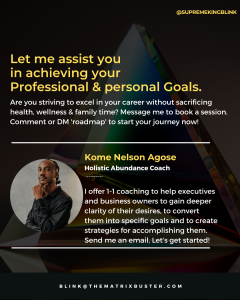From Gratitude to Greatness
From Gratitude to Greatness Start Your Year by Attracting Abundance
The beginning of a new year is a powerful time to set the tone for the months ahead. Resolutions and plans often take center stage, but what if you could supercharge your intentions by focusing on a simple yet transformative habit: gratitude?
Gratitude is more than a feel-good practice; it’s a tool that shifts your perspective, rewires your brain for positivity, and creates space for abundance in every area of your life. Let’s explore how starting your year with gratitude in action can lay the foundation for greatness and how some of the world’s most successful people have harnessed this practice.
I discovered the power of gratitude both in practice and as a state of being in 2020. I discussed this extensively in my book, 21 Affirmations: Igniting a Positive Mental Reset, where I highlighted it as the single most powerful tool for leading a positive life!

The Power of Gratitude
Gratitude is the act of focusing on the good, big or small, in your life. By doing this consistently, you train your mind to notice the positive instead of dwelling on the negative. Science backs this up: studies show that practicing gratitude can lead to improved mental health, stronger relationships, better sleep, and even enhanced physical health.
More importantly, gratitude creates an abundance mindset. Instead of approaching life from a place of lack or limitation, you begin to see opportunities, blessings, and possibilities everywhere.
Real-Life Examples of Gratitude Leading to Greatness:
Oprah Winfrey

One of the most iconic proponents of gratitude is Oprah Winfrey. Oprah often credits her gratitude practice as one of the key factors in her journey from hardship to becoming a global media mogul. She started keeping a gratitude journal early in her career, writing down five things she was grateful for each day.
In her own words, Oprah shares, “If you look at what you have in life, you’ll always have more. If you look at what you don’t have in life, you’ll never have enough.” Her focus on gratitude not only helped her attract success but also maintain a sense of peace and fulfillment amidst her busy and high-profile life.
Tony Robbins

Tony Robbins, a world-renowned entrepreneur and motivational speaker, is another advocate for the power of gratitude. Despite his humble beginnings and facing numerous challenges in his early life, Tony credits his daily gratitude practice for keeping him grounded and focused. Each morning, he dedicates time to reflect on the things he’s grateful for, from small moments to significant milestones.
According to Tony, “When you are grateful, fear disappears, and abundance appears.” This mindset has not only helped him build an empire but also allowed him to inspire millions worldwide to embrace gratitude as a cornerstone of personal and professional success.
How Gratitude Attracts Abundance

Gratitude shifts your energy from focusing on what you lack to appreciating what you have, and this shift opens the door for more good things to flow into your life. Here are a few ways gratitude can help you attract abundance:
- Builds a Positive Mindset: When you focus on what’s going well, you train your brain to recognize opportunities and solutions rather than problems.
- Strengthens Relationships: Expressing gratitude improves your connections with others, leading to more support and collaboration in your personal and professional life.
- Fosters Resilience: Gratitude helps you bounce back from setbacks by focusing on the lessons and blessings in disguise.
How to Put Gratitude into Action
Starting the year with gratitude doesn’t have to be complicated. Here are four simple steps to get started:
- Start a Gratitude Journal: Write down three things you’re grateful for each day. They can be as simple as a sunny morning or as significant as a career breakthrough.
- Create a daily gratitude practice with a partner: You can start a daily gratitude practice with your spouse, family, siblings, or close friends. Sharing your gratitude with others will not only deepen your connections but also motivate you to stay consistent with your practice.
- Express Gratitude to Others: Take time to thank the people in your life—a friend, a colleague, or even a stranger who’s made an impact.
- Join my Gratitude Challenge: Participating in a structured practice, like the “From Gratitude to Greatness: 21 Days to Manifest Abundance and Joy” challenge, can help you build a consistent habit and stay inspired. It’ll be kicking off this Saturday on my Instagram page @supremekingblink.
Why Start the Year with Gratitude?
The energy you bring into the new year sets the tone for everything that follows. By starting with gratitude, you’re choosing to focus on abundance, positivity, and possibilities. You’re not only preparing your mind for success but also aligning your actions with the energy needed to attract it.
As you reflect on the year ahead, remember this: greatness begins with gratitude. Just as Oprah used gratitude to rise to the top, you too can harness its power to create the life you desire. Let this be the year you transform your mindset and open your life to the abundance waiting for you.




